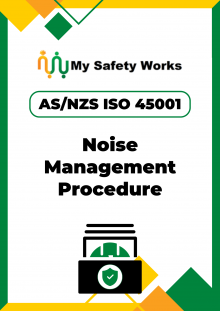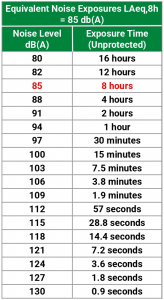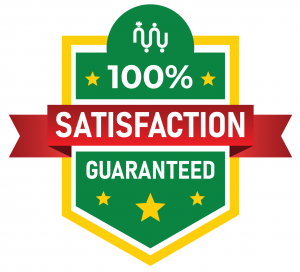
This noise management procedure can assist your business comply with AS/NZS ISO 45001 2018, Occupational Health and Safety Management System clauses:
The procedure may also help you comply with some of the other noise related standards.
Workplace noise is any noise that occurs in the workplace that can be a source of irritation, distraction, or other health and safety risks to employees. It generally refers to any kind of noise that can be disruptive or harmful to workers in a work environment.
There are many different sources of noise in the workplace ranging from machinery and equipment to co-workers and general outside noise. In many cases, excessive noise can be a part of the job, such as in construction or manufacturing.
Employers are required to take steps to minimise hazardous noise exposure to their employees. There are several health risks associated with noise exposure, including noise induced hearing loss, damaged hearing, tinnitus and stress.
Noise in the workplace can be measured using a sound level meter. A sound level meter is an instrument used to measure sound pressure levels in decibels (dB). The most common type of sound level meter is the A-weighted sound level meter, which is used to measure noise levels in dB(A).
A sound level meter is an important tool for anyone who needs to measure sound levels in their workplace, to ensure that noise levels remain below a certain threshold.
Audiometric testing should be available to any worker likely to be regularly exposed to noise exposure limit levels more than the standard set (e.g. 85 dBA). The audiometric testing scheme should include an initial test soon after a worker commences work, where they are exposed to the hazardous effects of noise. Periodic testing should be scheduled at specified timeframes after that depending on the risk to workers who are exposed.
The Model Code of Practice for Managing Noise and Preventing Hearing Loss recommends that average noise not exceed 85 dB(A) over 8 hours to minimise the occupational risk of hearing loss. Whether you exceed the exposure standard of 85dB(A) averaged over eight hours depends on the level of noise involved and how long a person is exposed to it.
Note: The decibel scale is logarithmic, therefore, on the decibel scale an increase of 3dB represents a doubling or twice the sound energy. This means that on a time-weighted average the length of time a worker can work when exposed to the noise is reduced by half for every 3dB increase in noise level.
Where the noise levels fail to meet the legislative requirements, all practicable action should be taken to control and reduce noise emissions in that work area. Methods of noise control should be prioritized according to the hierarchy of control options, for example.
Elimination – removing the hazard or its source from the workplace.
Substitution – swapping the noise source, resulting in a noise reduction.
Isolation – removing the hazard from the employee or the employee from the hazard.
Engineering controls – physically altering plant and equipment or the work environment or using sound-absorbing materials.
Administrative controls – follow safe work procedures. Designing jobs for hearing conservation to reduce exposure to noise. Use job rotation to alternate noisy tasks with quiet ones. Restrict access to areas of high noise levels to essential staff only.
Personal protective equipment – personal hearing protector devices to protect hearing against a loud noise. Work areas where hearing protection (PPE) is required should be clearly sign posted.
Note: The workers who perform the work task should always be consulted about occupational noise control measures, in particular any health and safety representatives

Legislative Noise Exposure Levels
This 11-page noise management procedure can provide you with practical guidance on:
The procedure can help you ensure that all workplace noise is assessed, monitored and controlled and ensure workplace health and safety compliance with statutory requirements.
This procedure can be applied to all areas where workers are required to work. The procedure is also relevant to contractors while completing work on behalf of your business.
